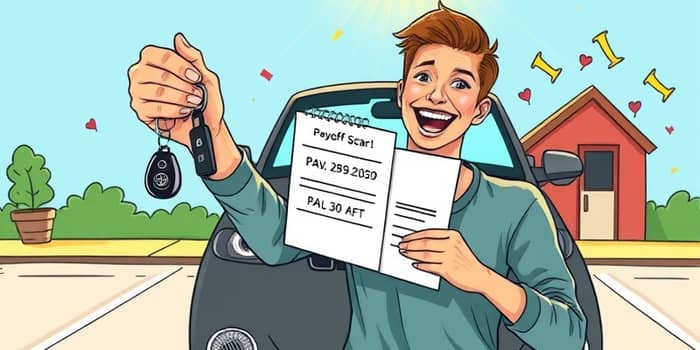
Paying off a loan is a thrilling milestone—a moment that signifies release your financial burden and marks the transition to a debt-free chapter. Yet in the excitement, many borrowers overlook a critical step: confirming the exact payoff balance before submitting that final payment. This oversight can lead to lingering small balances, unexpected fees, or delays in closing your account. With some preparation and attention to detail, you can cross the finish line confidently and celebrate true victory.
Your monthly statement balance reflects what you owe at the close of a billing cycle, but the actual payoff balance often includes more than that figure. Lenders calculate daily interest—known as per diem interest—on the outstanding principal until the moment they receive your final payment. That means the amount you see on your statement may be several dollars short of the real payoff.
Additional charges can also sneak in: administrative fees, late payment penalties, or prepayment fees outlined in your loan agreement. By failing to confirm the full payoff amount, you risk paying too little—and keeping your account open—or paying too much, tying up cash that could be used elsewhere. Always ensure your payment is accurate to avoid these risks.
Before you make the last payment, reach out to your lender for an official payoff quote or payoff letter. This document breaks down exactly what you owe as of a specific date, itemizing:
Many lenders make these quotes valid for just 7–10 days. After that window, interest continues to accrue, and you’ll need a fresh payoff letter. You can request this via your lender’s website, mobile app, or by phone. Do not rely on the “current balance” or “statement balance” displayed online—always ask specifically for a payoff quote.
A step-by-step plan helps you avoid missteps and close your loan without a hitch. Follow these actions precisely, and you’ll secure complete loan closure:
If you’re mailing a check, allow extra delivery time. For wires or electronic transfers, verify that same-day posting is possible. Keep proof of payment and your payoff quote on file until you see confirmation that your account is closed.
Completing the last payment is only part of the journey. Lenders must update your loan status to “paid in full” and, for secured loans like auto or mortgage, release any lien on your asset. Until these steps are done, your lender may still hold a claim.
Request written confirmation of closure, and monitor your lender account for at least two weeks. You should also check your credit report within 30 days to ensure it shows the loan as “paid” and “closed.” If errors appear—or if the lender delays in reporting—you may need to dispute the entry with the credit bureaus.
Even experienced borrowers can stumble when making their last payment. Watch out for these traps and take preventive action:
To avoid lingering unexpected fees, always double-check every number and deadline. If the payoff quote expires, request a new one immediately.
Beyond the technical steps, adopting the right mindset can transform your payoff experience from stressful to empowering. Start by tying your payoff date to a personal goal—perhaps a birthday or anniversary—so that reaching it feels deeply rewarding.
Keep all communication with your lender—emails, letters, notes from calls—organized in a single folder. That way, you have instant documentation if discrepancies arise. Set calendar reminders a few days before your quote expires, prompting you to pay or request an updated quote in time.
Celebrate each payoff milestone, whether it’s your car loan, student loan, or mortgage. Acknowledging progress keeps your motivation high. Once you’re debt-free, channel the money you’d been using for payments into an emergency fund or investments. This shift can help you protect your credit score status and build long-term wealth.
Reaching the finish line on a loan is more than a transaction—it’s a declaration of discipline, perseverance, and hope. By meticulously confirming your payoff balance, reviewing all fees, and ensuring your account is properly closed, you turn a routine payment into a landmark achievement.
Remember that the payoff balance is the true cost to extinguish your debt, not just the principal figure on your last statement. With careful planning and attention to detail, you can eliminate unexpected final charges and step confidently into a future unburdened by that loan. Congratulations—you’ve earned it, and now it’s time to enjoy your unlock true financial freedom.
References













